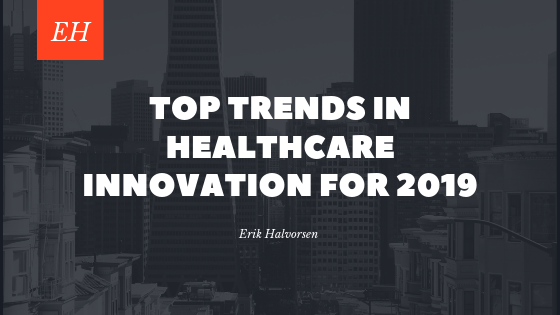Like technology, healthcare is evolving. In part, driven by the sheer volume of technology innovation in medical devices, diagnostics, and digital health. Healthcare is also a triple-bottom-line business—better outcomes for patients at a lower expense and a better overall customer experience. New medical devices and therapies give patients a chance at a better quality of life. It’s amazing how far healthcare has come in the past thirty years. Mainframe computers in the 1980s allowed for data processing and storage that have led to electronic medical records that track the massive amount of health data. Cardiac devices, including bypass machines, LVADs, and stents, have been perfected to give heart patients a longer lifespan. And mobile devices have made medicine accessible from anywhere and anytime.
With each year, there are new innovations that have the potential to dramatically improve human health, quality of life and access to affordable care. As with each of these potentially transformative innovations, they must demonstrate not only that they work, but are cost-effective and can relatively easily be adopted into practice by the medical community. Let’s take a look at the top trends affecting this year.
- Blockchain — This has been part of the fintech industry for some time. It is an algorithm that stores transactions (or data) into a block. One block is connected to another block using a decentralized system. It uses cryptography to send the transaction between two parties securely, meaning it cannot be altered or deleted. Using blockchain in the healthcare space would revolutionize how patient information is sent securely to doctors, pharmacies, hospitals, health insurance companies … etc. The information would not be lost, altered or deleted. It can also speed up payments.
- 3D Printing — This type of printing has moved from the amateur tinker to highly complex medical devices and large-scale manufacturing of roads and houses. It is only a matter of time before 3D printing is used to make viable organs. For example, Israeli scientists at Tel Aviv University’s School of Molecular Cell Biology and Biotechnology have created a human heart from human cells using 3D printing. The heart is not functioning and is too small for a human, but it is paving the way for other organs to be created with this technology. 3D printing is cost-effective and can use a number of materials. Doctors can design and print devices specific to the patient’s needs and dimensions right on site and implant them—saving time and money.
- Artificial Intelligence — There will be a large investment in AI (artificial intelligence) by VCs, healthcare and biotech companies this year. AI will provide insights into diagnostics, patient care processes, treatment, and patient outcomes. Companies like FAR Biotech are utilizing an AI platform to more efficiently design new drugs for cancer and other indications. Early clinical applications have had success triaging patient symptoms and scanning and interpreting radiology scans. With an already massive amount of data in healthcare expected to grow at 36% every year for the next 10 years, healthcare providers will need AI tools to help them efficiently gain new insights into the best treatment plans for patients.
- Wearables — We already have wearables in the form of Fitbits, apps on our Apple watches, and sensors. There has been a ton of hype, most of it unrealized in terms of improving health. However, connected devices and “smart clothing” are poised to take that next step, with increased connectivity to our daily life and activity as well as communicating data about a patient’s health in real time directly to a physician or the emergency room. The limiting factor is not the wearable technology or digital communication, but the healthcare providers figuring out what to do with yet another massive amount of data coming their way.
Erik Halvorsen is the Chief Business & Strategy Officer at FAR Biotech. As a result of his industry experience, Erik is an often sought-after public speaker, and he has served as an advisor to various hospitals and start-ups. He is constantly looking for new ways to improve patients’ lives while changing the broader healthcare industry for the better. He has been referred to as a “translator,” in that he has the ability to speak science with businesspeople and speak business with science people.

